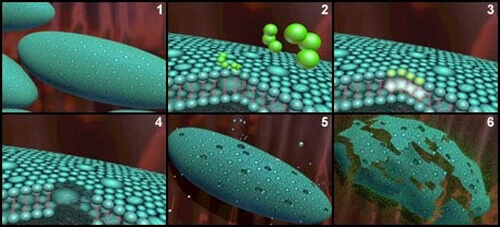Ozone Effect on Bacteria
Ozone inactivates (kills) bacteria through a process called Lysis. Lysis is the breaking down of the membrane of a cell wall that compromises it's integrity. Ozone causes direct oxidation as the O3 molecule returns to O2. The oxidative burst that occurs as ozone reverts to oxygen causes an electrical discharge that will lyse the cell wall of any adjacent bacteria. In addition, the now valent oxygen atom (O) can combine with any carbon atom to create CO further damaging the cell wall of bacteria. The oxidation caused by ozone reactions react with all essential components of a living bacteria, enzymes, proteins, DNA, RNA.
The process of ozone oxidation with bacteria damages the cell wall and membrane causing the internals of that cell to leach from the membrane. While there may be remaining dead bacteria cells after ozone oxidation, ozone can inactivate all living bacteria. Due to the method of oxidation from ozone there are not bacteria that are "immune" from ozone oxidation. Ozone has the ability to inactivate all bacteria types.
The image below reflects the process of bacteria cell Lysis:

Image reflects Bacteria Lysis steps:
1 – Computer animation of a bacterial cell
2 – Close-up of an ozone molecule contacting the bacterial cell wall
3 – Ozone penetrates the cell wall and causes Lysis
4 – Close-up of the effect of ozone on the cell wall
5 – Wider view of the bacterial cell after it has come in contact with a number of ozone molecules
6 – Cell wall destruction (lysis)
Learn more about types of pathogens ozone is effective at inactivating here
Ozone applications and how ozone is used for bacteria inactivation










